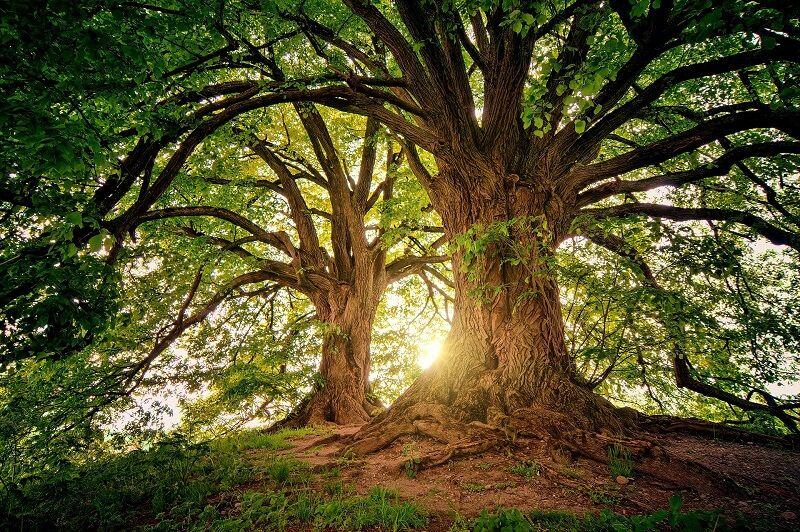We asked Emilie Parthuisot a few questions to find out more about Atmosylva, the company that offers its expertise to all players in the timber industry who wish to make a commitment to preserving natural areas and forests.
Can you introduce yourself? What's your background?
I've always been passionate about nature and forests, an infinitely rich and inspiring environment. I'm very concerned by the preservation of natural resources and I believe it's more than necessary to bring people closer to their environment and the forests that surround them.
I worked for 8 years as a lawyer in the building and civil engineering and property development sectors, managing the legal aspects of complex projects, working closely with a wide range of public and private, operational and financial stakeholders. It was very rewarding because my work covered so many areas, and this experience is very useful for my business today.
What led you to set up Atmosylva?
I decided to found Atmosylva to preserve forests, plant trees and safeguard natural environments in France, thanks to funding from companies committed to improving their environmental impact and contributing to carbon neutrality.
This founding act is the result of research and studies in forest management and numerous meetings with key players in the forestry-wood industry. My experience working for major groups also enables me to understand the issues and expectations of companies. This is how Atmosylva positions itself as a creator of links and a vector for a new language of communication between the economy and nature.
What role does Atmosylva play in the wood industry?
Atmosylva's role is to encourage the renewal of forests and their adaptation to climate change. We want to preserve the forest for its own sake, but also ensure the future of wood and forest co-products, renewable natural resources par excellence. It is also a lever to encourage the management of forests, providing invaluable assistance to initiate sustainable management and thus boost the forestry-wood industry in line with the specific characteristics of each region.
There are many opportunities to be created in France to strengthen short-cut systems, improve traceability and enhance the value of French wood, with a very strong economic and social impact at local level.
What difficulties do you encounter on a day-to-day basis in carrying out your mission?
Today, the link between forests and wood is not (or no longer) obvious in the collective imagination. The main difficulty is to show this necessary relationship between the forest, a fascinating and almost magical universe, and the wooden furniture we hold so dear. Forests are still little-known in their management aspects, and Atmosylva's mission is to show that a forest can be multifunctional and therefore beneficial for ecosystems, the climate, collective well-being and also for an economy based on sustainable natural resources, instead of fossil-based materials and energies.
What successes can you look back on?
First and foremost, we're seeing a real enthusiasm for our projects among companies. There's a real desire to act, to reduce their impact and to go further by acting directly on a local scale. That's why we help them by providing a variety of projects and "turnkey" communication tools, with the possibility of more integrated support for the company's communication strategy.
Label Bas Carbone projects have also been very well received. They respond to the need for carbon reduction certification, issued by the government, which even validates the environmental and socio-economic co-benefits of these projects.
Who can benefit from private financing with Atmosylva?
Private and public forest owners can benefit from Atmosylva's financing schemes for fallow land to be afforested, or for forests that have suffered from storms, fires, disease and pest attacks. Some of these forests have reached a complete silvicultural impasse, and the species in place are often poorly adapted to changing climatic conditions.
Our projects also involve scientific experimentation and silvicultural work to encourage natural regeneration and preserve continuous forest cover. We also address projects to restore areas of biodiversity, wetlands in forests or on the banks of watercourses, known as riparian zones, which are veritable reservoirs of biodiversity!
What are Atmosylva's objectives for the coming years?
Our aim is to be at the cutting edge of forestry and biodiversity projects, to develop innovative offerings, and to contribute to experimentation and the acquisition of knowledge for increasingly adapted silvicultural management of resilient, multifunctional forests.
We want to develop opportunities for the business world to get involved and invest in forest preservation, and to encourage the bioeconomy, i.e. an economy based on nature and its sustainably managed resources.
In your opinion, reforestation is necessary because ... ?
Reforestation often takes place following climatic events, natural and sanitary hazards degrading forests, or when natural regeneration is insufficiently adapted to the climate and the objectives of the forest. Trees, or rather their seeds, "move" and modify their ranges, but at a much slower rate than the rise in temperature.
Above all, it's important to think in terms of species diversity, for forests that are more resistant to disease and richer in biodiversity. Last but not least, reforestation requires a global approach, taking into account existing stands and even dead trees, which are essential elements of forest ecosystems.
Thank you to Emilie Parthuisot for answering our questions!



